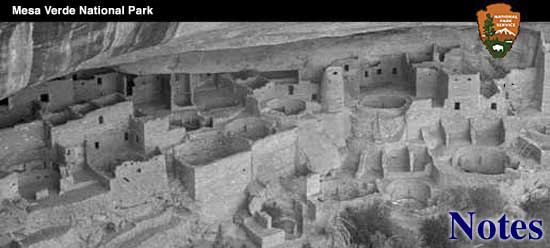

|
There are to be found in the Mesa Verde National Park two species of Scelopori or Swifts. These two lizards are commonly found running about the grounds near the Museum. They abound from the highest point in the park to the bottoms of the deepest canons. The members of the genus SCELOPORUS need not be confused with other lizards found in the park. Any lizard in Mesa Verde, other than the Horned Lizard (commonly miscalled Horned Toad) whose scales on its back are decidedly keeled and sharply pointed is either the Rock Swift, "Sceloporus elongatus," or the Sage Brush Swift, "Sceloporus graciosus graciosus." At first glance these two species seem to be very much alike but a simple key is to be found in their coloration. The Rock Swift is usually gray or brown, often cross marked on the back with lines of a darker color, but without lines of a darker color running lengthwise between the fore and hind limbs. This Swift often attains a length of 170 mm. (7 inches) or more.
The Sage-Brush Swift has nearly the same ground color, no cross markings on the back and always has broken or continuous bands of color on each side running between the fore and hind limbs. This Swift seldom attains a length of over 135 mm. (about 5-1/2 inches).
The Sage-Brush Swift seems to prefer the more level spaces in the park and is the most common lizard around the museum and the more or less level canon floors. On the rocky hillsides the Rock Swift is found to be most common. As each species often invades the favorite haunts of the other this may not be used as a means of identification. The name Blue-Bellied Lizard has been applied to both species because the bright blue patches on either side of the belly on the males. These lizards belong to a group known as the "brittle-tailed lizards." Their tails are so constructed that they break very easily and this fact often proves to be a lifesaver to them. If a Sceloporus is caught by the tail a little pull on his part disjoints this member and enables him to scamper to freedom. It is often supposed that these lizards can break or throw their tails at will. This, however, is not based upon fact, as it is necessary for the tail to be caught in such a manner that the lizard can pull against it and this pull or jerk causes the breakage. Both of these lizards are perfectly harmless and very beneficial, as they are active agents in the control of insects and should be allowed to increase their numbers without being molested by man. | ||||||
| <<< Previous | > Cover < | Next >>> |
vol3-1f.htm
14-Oct-2011